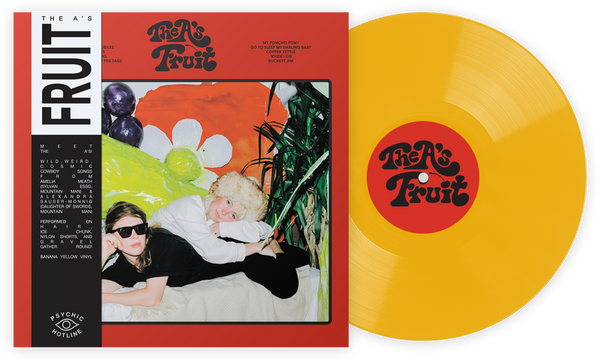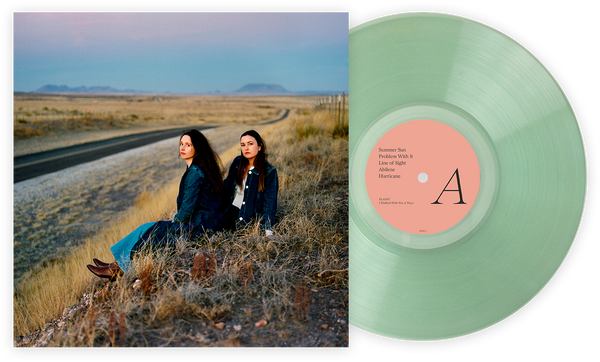Jika Anda membaca ini, Anda sudah menyadari bahwa saat ini sedang terjadi apa yang disebut kebangkitan vinyl. Penjualan vinyl sedang meroket, karena banyak dari kita menyukai memiliki manifestasi fisik dari musik yang kita cintai yang melampaui daftar putar dari layanan streaming. Media lokal mungkin kesulitan untuk memahami hal ini - ada segmen “Vinyl kembali! Ada apa ini?” yang ditayangkan di suatu tempat di Alabama saat ini - tetapi itu pada dasarnya adalah semua itu.
Tetapi ada satu elemen dari kebangkitan vinyl yang telah saya perhatikan dan saya tidak yakin apakah itu telah dibicarakan cukup, yang membawa kita ke sini hari ini: kesuksesan luar biasa dari soundtrack baru ketika mereka dicetak dalam bentuk vinyl. Setiap laporan triwulanan tentang penjualan vinyl baru memiliki kejutan tersendiri - siapa yang masih membeli salinan baru dari Sgt. Peppers? - tetapi tidak lagi mengejutkan melihat soundtrack vinyl di 20 teratas, yang hampir tidak pernah terjadi ketika ditranslasikan ke grafik penjualan streaming atau CD. Soundtrack saat ini lebih populer di vinyl dibandingkan media lainnya. Ingin bukti?
In 2016 we saw, Guardians of the Galaxy, which sold more than 30k copies, in the top 15 of new records sold, and in 2015, it was No. 10, selling 43,000 copies. This year, however, figures to see at least two, and possibly four or five soundtracks end up in the top 20 albums sold on vinyl in the year. At the midway point of 2017, La La Land sat at No. 2 on the vinyl charts, and Guardians of the Galaxy Vol. 1 somehow crashed back in at No. 3 (seriously, who is still buying this?). And with the soundtracks to Guardians of the Galaxy 2, Baby Driver, and Moonlight selling well on vinyl across Amazon, brick-and-mortar stores and your neighborhood Urban Outfitters, soundtracks are a bright spot within the bright spot that is new vinyl sales.
But why? What is it about soundtracks that make them so popular amongst the vinyl loving populace?
1. Soundtracks Like Baby Driver Have A Lot Of Songs On Them
One of the downsides of the vinyl format is that it’s hard to assemble a collection that would allow you to play all the songs from something like Baby Driver or Guardians of the Galaxy in a row. It’d cost you something like $120 to assemble either soundtrack using the original records. And since most Baby Driver stans aren’t going to want to spend an evening listening to an entire Golden Earring album, the soundtrack is the better option. There’s something to be said about the convenience of soundtracks on a medium that is largely inconvenient.
2. These Soundtracks Are Like A Spotify Playlist In Vinyl Form
One of the heartening things about all the copies of Guardians of the Galaxy and La La Land that are getting bought is that they’re often being purchased by people outside of the cliche vinyl demographic of some nerd over 30. College-aged kids who are just getting into vinyl—and who are needed to keep the vinyl marketplace growing, since they’re the collectors of the future—are buying these soundtracks, and in their construction, they share a lot in common with the number one musical discovery tool of the millennial generation: the Spotify playlist. In fact, they actually are Spotify playlists. Playing these records at a party is easier, and more varied, than trying to play the new Fleet Foxes.
3. People Love Movies And Soundtrack Records Are The Ultimate Piece Of Film Merchandise
This is probably the simplest reason soundtracks are huge: Is there any piece of movie merchandise that is cooler or more connected to the movie than its soundtrack on vinyl? I guess you could argue for the poster, but the record plays music.
4. The Most Beloved Movies Of Recent Memory Foreground Music
The major difference between the movie soundtracks that are crashing the charts today and the vinyl movie soundtracks from years past that didn’t is that music plays a vitally important role in all of them. Baby Driver and La La Land are built around music, and both Guardians of the Galaxy have Star-Lord’s Awesome Mixes as plot points. Being that the number of human beings who saw those movies is absurdly vast—even your mom saw La La Land—it stands to reason that people would want to extend the experience of the movie to their record collection.
It’s probably a combination of all four of these things leading to these huge sales, but you can bet that more and more soundtracks will be issued on vinyl, and more of them will crash the charts.
Andrew Winistorfer is Senior Director of Music and Editorial at Vinyl Me, Please, and a writer and editor of their books, 100 Albums You Need in Your Collection and The Best Record Stores in the United States. He’s written Listening Notes for more than 30 VMP releases, co-produced multiple VMP Anthologies, and executive produced the VMP Anthologies The Story of Vanguard, The Story of Willie Nelson, Miles Davis: The Electric Years and The Story of Waylon Jennings. He lives in Saint Paul, Minnesota.
Related Articles
Bergabung dengan Klub!
Bergabunglah sekarang, mulai dari 44 $Diskon eksklusif 15% untuk guru, mahasiswa, anggota militer, profesional kesehatan & penjaga pertama - Verifikasi sekarang!












